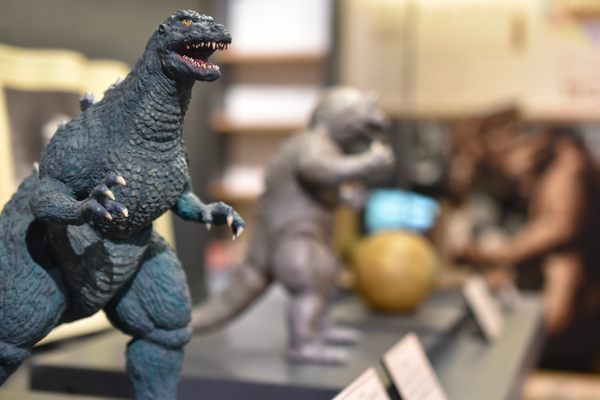The city of Sukagawa is located just south of Koriyama, one of the major cities in Fukushima Prefecture, a mere 10 minutes away by train. It’s known for its annual fire festival and its peony garden, and as the birthplace of Eiji Tsuburaya, the “Father of Tokusatsu” who co-created the Godzilla and Ultraman franchises.
Born in 1901, Tsuburaya began his career as an assistant cinematographer at the age of 19 and went on to work on several notable films including A Page of Madness (1926). A lifelong inventor, he was greatly influenced by the 1933 King Kong and its use of special effects (or, in Japanese, tokusatsu) and in October 1934 created the prototype of the camera crane that continues to be widely used in filmmaking today, constructing a replica of the apparatus designed by D. W. Griffith for his 1916 epic film Intolerance without any blueprints or manuals.
Following his involvement in propaganda films during World War II, Tsuburaya was briefly purged from Toho but founded his own company and provided special effects for other film productions, such as The Invisible Man Appears (1949), which is regarded as the first Japanese science fiction film. He was back at Toho by 1950, however, and went on to create one of the most iconic characters in Japanese cinema: Godzilla.
With the success of the 1954 film, Tsuburaya and Toho continued to produce many monster movies over the next decades, including Rodan (1956) and Mothra (1961). As television became popular, Tsuburaya also created the Ultra franchise in 1966, beginning with an Outer Limits-like series Ultra Q and its sister superhero series Ultraman. The franchise remains popular to this day.
Tsuburaya died at the age of 68 in 1970, but his legacy is remembered far and wide. In his hometown, a small museum is dedicated to his career and creativity, exhibiting numerous miniature models of Godzilla characters as well as a Godzilla suit used in the production of a short film. Digging deeper into Tsuburaya’s influences and inspirations, the museum is a must-visit for fans of Japanese monster movies.

